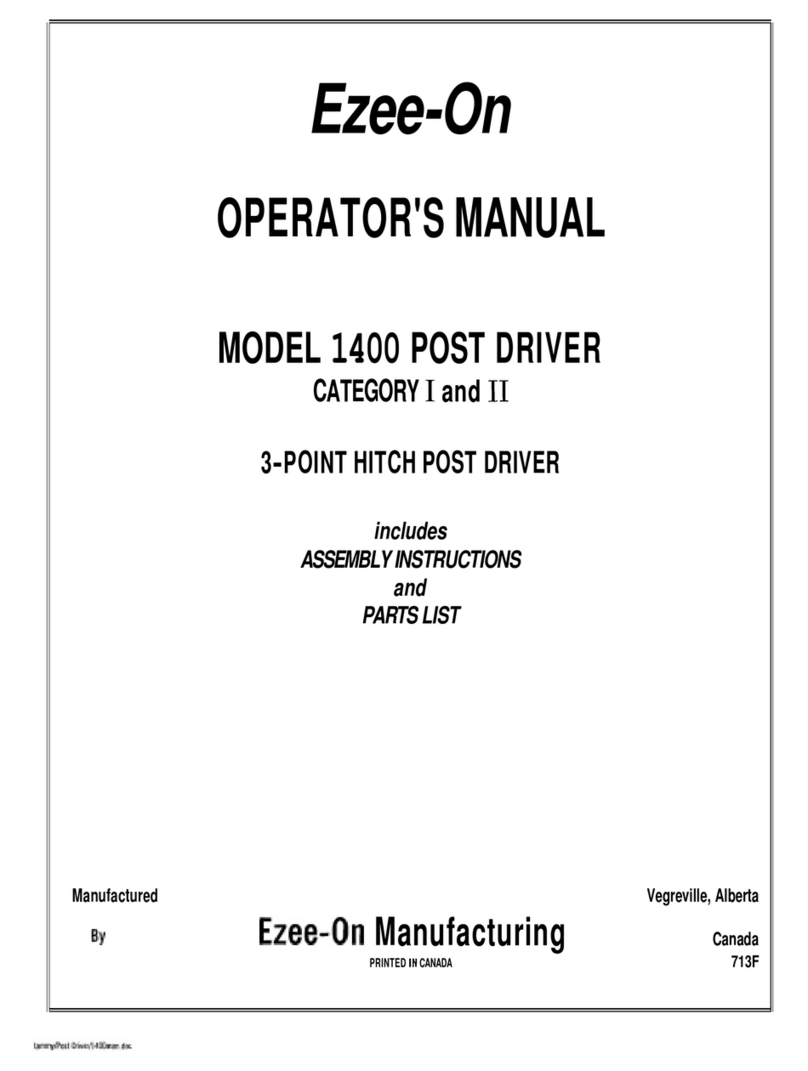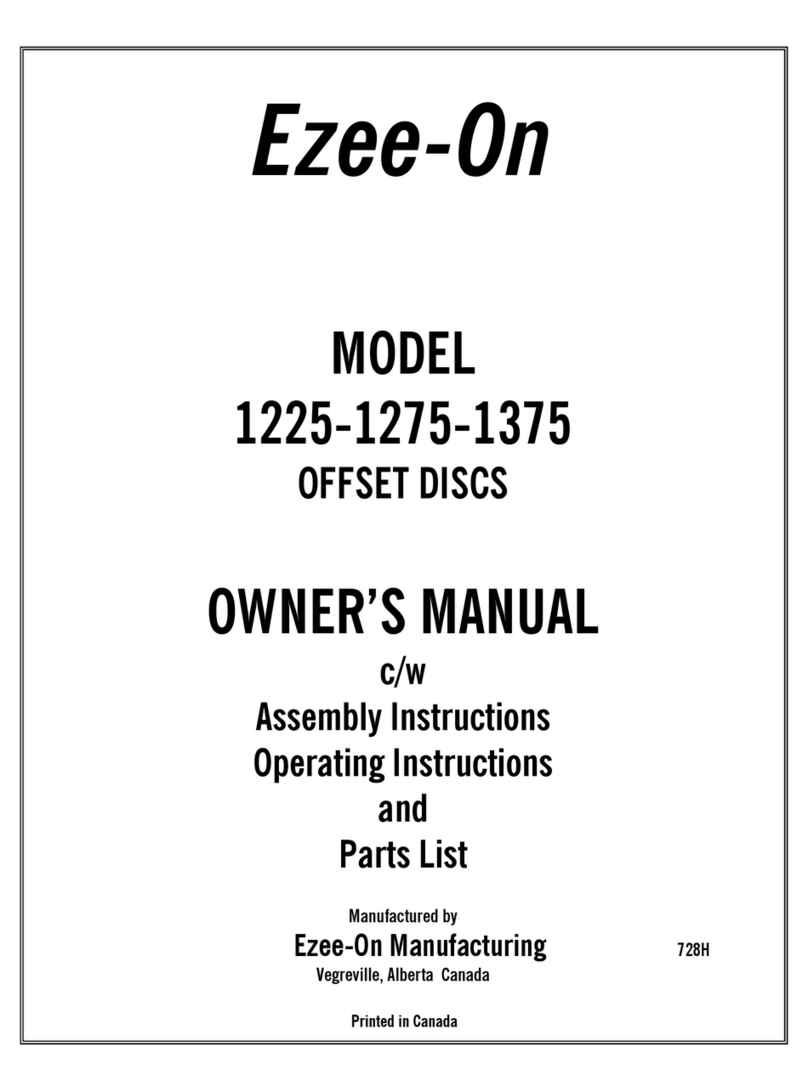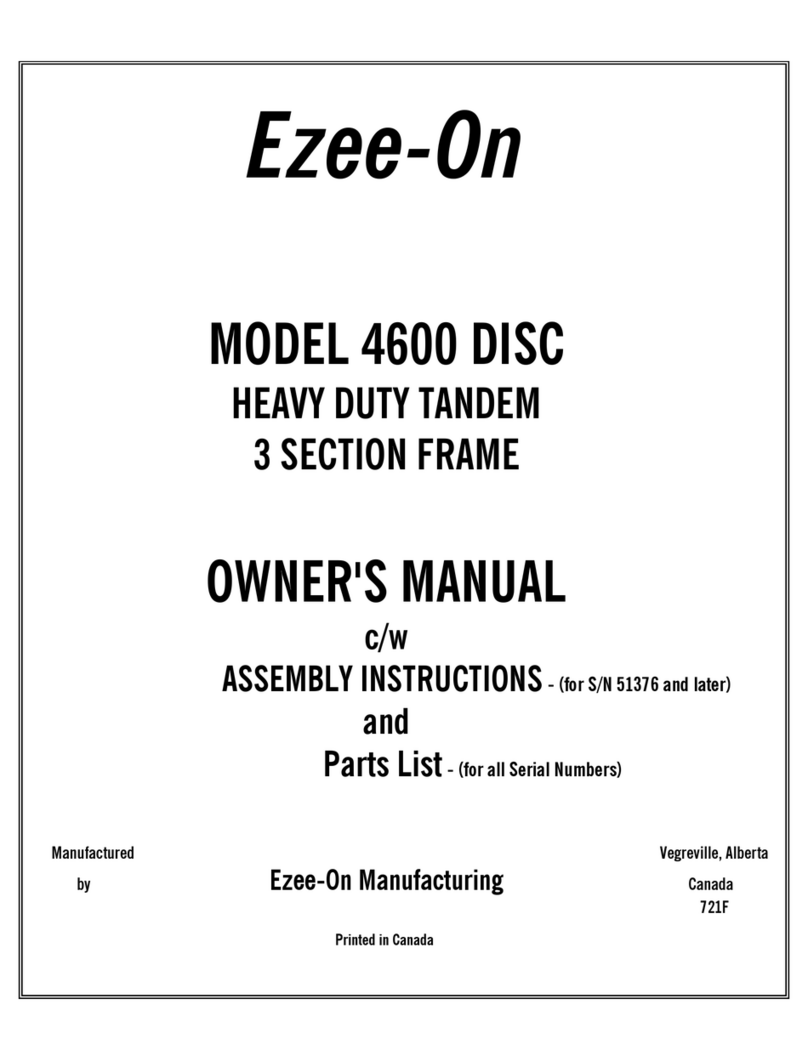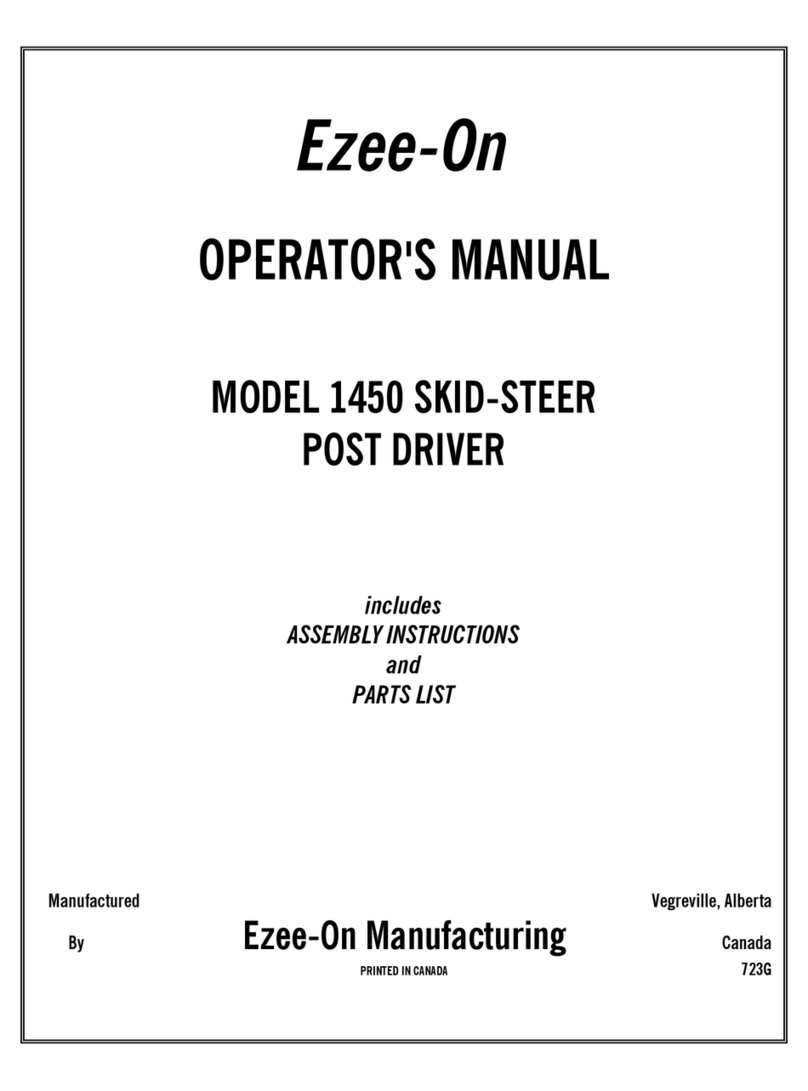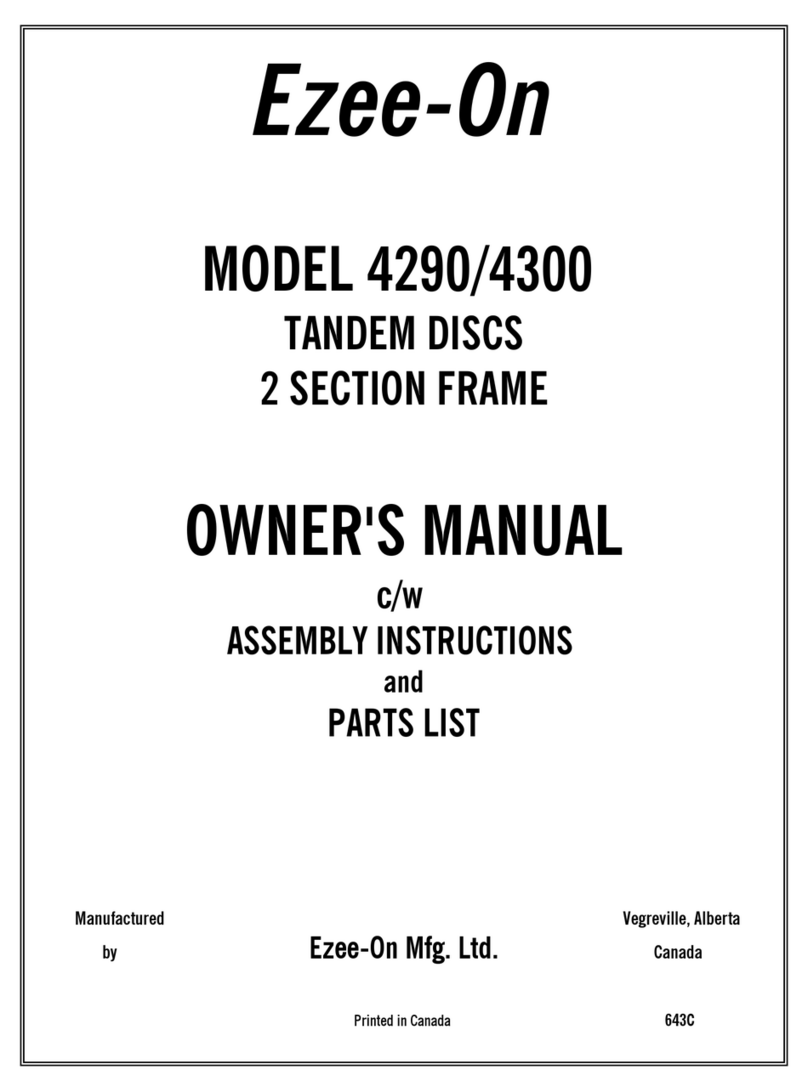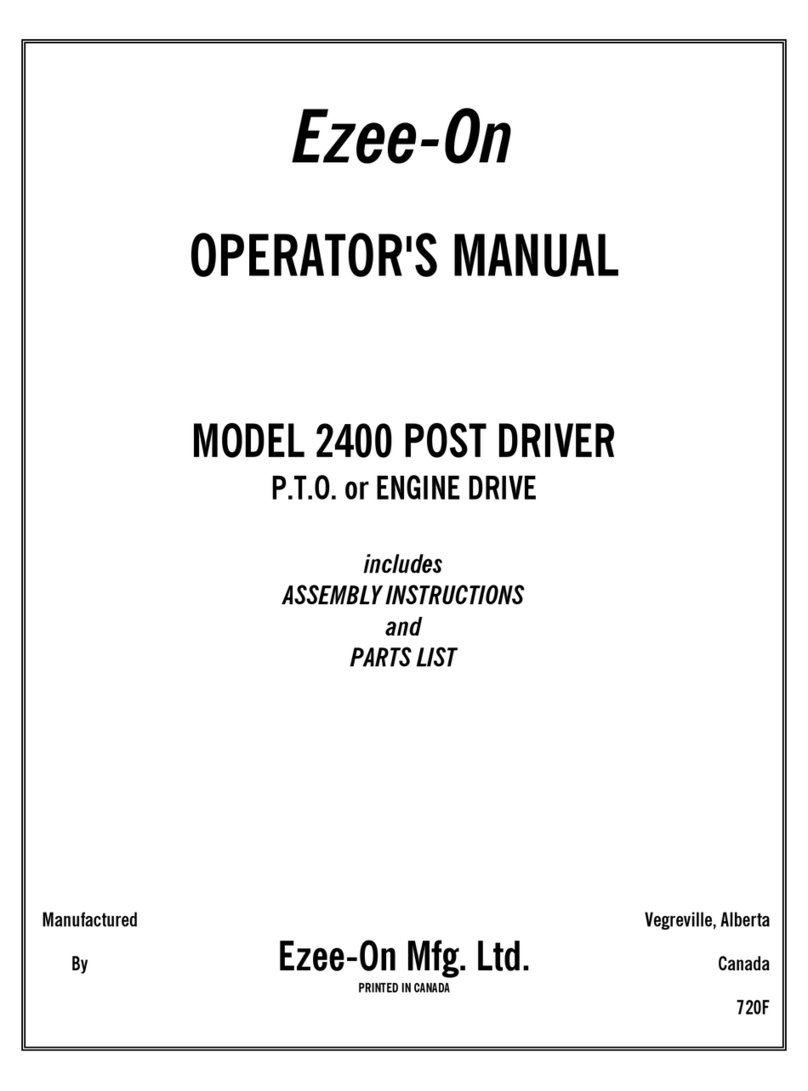
Dr~lls,Coulter Ezee-
lirr~ited Manufactl.lringls
IWonths: NQ
Ezee-Or1 corr~ponents IN0
hoses,
manufacturers.
ball
&
and
parts/
-[his warra~ity
Extended Coverage Limited Warranty
(24
additional months):
Air Drills, Air Carts, Cultivators, Chisel Plows, Offset and Tandem Discs and Post Drivers carry limited extended warranty.
On Manufacturing's obligations under this extended warranty coverage shall be to repair or exchange, at Ezee
-
On
option, for the original, non
-
commercial owner:
13
-
24 100% Ezee
-
On manufactured components only, labour
-
see below for description
25
-
36 Months:
50%
manufactured only, labour
-
see below for description
Ezee
-
On manufactured components are, but not limited to: frames, axles, hitches, castor assemblies, packers, turnbuckles, rockshafts,
packer frames, packers
-
steel, tanks
-
air cart seed and fertilizer tanks, seed cups, metering rollers.
NON Ezee
-
On manufactured components are, butnot limited to: Monitors, tires, rims, bearings, hydraulics: motors, pumps, controls,
cylinders, hoses and valves; sprockets, chain, rubber packer wheel tires, polyurethane wheel mounted packers, coulter blades, shanks,
springs, bolts, pulleys, air sweeps, spikes, spoons, seals, power wheels, hitch jacks, hubs and wheels.
The Company in no way warrants engines, batteries, coulter assemblies, rubber tires, or other trade accessories since these items are
warranted separately by their respective
T2
-
215
Bearing Extended Coverage Limited Warranty:
Seven vear limited warranty: Extended coverage (13
-
84months) on T2
-
215Series bearingislimited tothe replacement of bearingsand seals
for the original, non
-
commercial owner. Associated bearing parts, labor, freight, etc., are not covered.
Warranty Limitations and/ or Exclusions:
1.
Buckets bucket tines, bale spears &tines, grapple tines, pallet forks, shanks, all ground engagingtools, disc openers disc
blades, air seeder hose and normal wear items carry NO warranty.
2. There is no warranty coverage if parts or attachments, other than those made or marketed by Ezee
-
On Manufacturing have been
used in connection with the unit, and in the sole judgment of Ezee
-
On, such use affects its performance or reliability.
3. If the equipment has been altered or repaired in a manner which, in the sole judgment of Ezee
-
On, affects its performance, stability
or reliability.
4.
The purchaser shall be responsible for dealer travel time to the machine or to deliver the machine to the dealer's service shop for
repair. Ezee
-
On Manufacturing does not cover delivery charges or travel time.
policy is subject to change without prior written notice atEzee
-
On Manufacturing's sole discretion.
Revision: September
1,
2004






